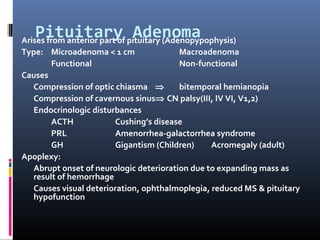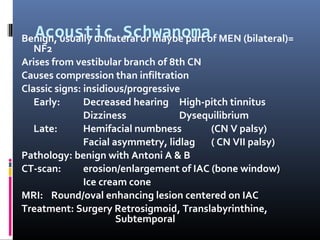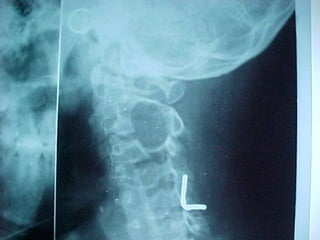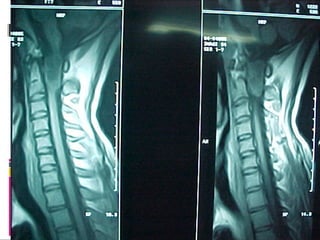This document provides an overview of central nervous system (CNS) tumors. It begins by classifying tumors based on origin and nature. It then discusses the occurrence, clinical manifestations, syndromes, and general clinical features of CNS tumors. Specific pediatric and adult tumor types are also described, along with their characteristics, treatment approaches, and prognoses. Finally, the document briefly discusses spinal tumors, including types, clinical presentation, diagnosis, and differential diagnosis.




















































